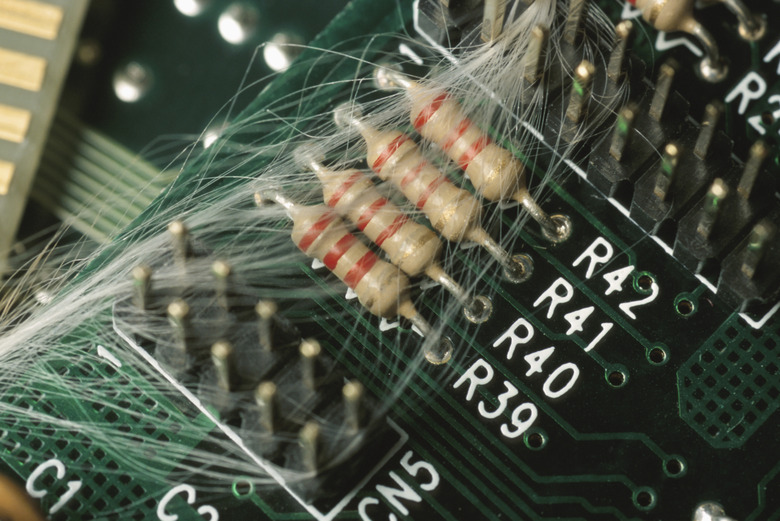Homemade Resistors
Electrical resistors are passive electrical components that limit current flow in an electrical circuit. Resistors can be constructed from different materials. Some of the most common materials used are metal and carbon. Carbon-based resistors are preferable to metal-based resistors where inductive interference is an issue. For many analog electric and electronic circuits, metal-based resistors (such as the wirewound resistor) can be used with no ill effects.
How a Wirewound Resistor Works
How a Wirewound Resistor Works
Electrical current flow is explained by a physical relationship discovered by Georg Simon Ohm, a nineteenth-century German physicist. That explanation is known as "Ohm's Law."
Ohm's Law explains that the voltage difference in an electrical circuit is the product of the electrical current value (in Amperes) multiplied by the circuit resistance value (in Ohms). Explained another way: an electrical circuit that has a difference of 2 volts, with 1 Ampere of current flowing through it, has a resistance of 2 Ohms.
All electrically conductive materials are somewhat resistive, too. Because of this, even a good electrical conductor, such as metal wire, can be used as a resistor. Resistance can be adjusted by limiting how thick the wire is, and by increasing or decreasing the conductive path through the wire. Resistance can also be controlled by wire material. Some metals, such as gold, silver, and copper, are excellent electrical conductors and have a lower resistance value. Other metals, such as iron, tin, or platinum, do not conduct electrical current very well because of their higher resistance values.
Creating a Wirewound Resistor
Creating a Wirewound Resistor
To create a wirewound resistor, one piece of wire would have to serve as the path for the electrical current to flow from one end of the resistor to the other. To create a resistor with a small resistance (or Ohm) value, use a thicker, shorter wire as the path between the two electrical leads. To create a resistor with a larger Ohm value, use a thinner, longer wire.
As the name would suggest, a wirewound resistor is typically wrapped in some way around an electrically insulated material (such as plastic or ceramic). To lengthen the conductive path and raise the Ohm value, wrap a longer wire more times around the insulator. A more direct path will lower the Ohm value and allow more current through.
Another factor in creating a wirewound resistor is what type of wire is used. Steel wire is not as good a conductor as copper wire; therefore, steel wire may be used when a larger resistance value is needed.
Cite This Article
MLA
Sandoval, David. "Homemade Resistors" sciencing.com, https://www.sciencing.com/homemade-resistors-5862887/. 24 April 2017.
APA
Sandoval, David. (2017, April 24). Homemade Resistors. sciencing.com. Retrieved from https://www.sciencing.com/homemade-resistors-5862887/
Chicago
Sandoval, David. Homemade Resistors last modified March 24, 2022. https://www.sciencing.com/homemade-resistors-5862887/
